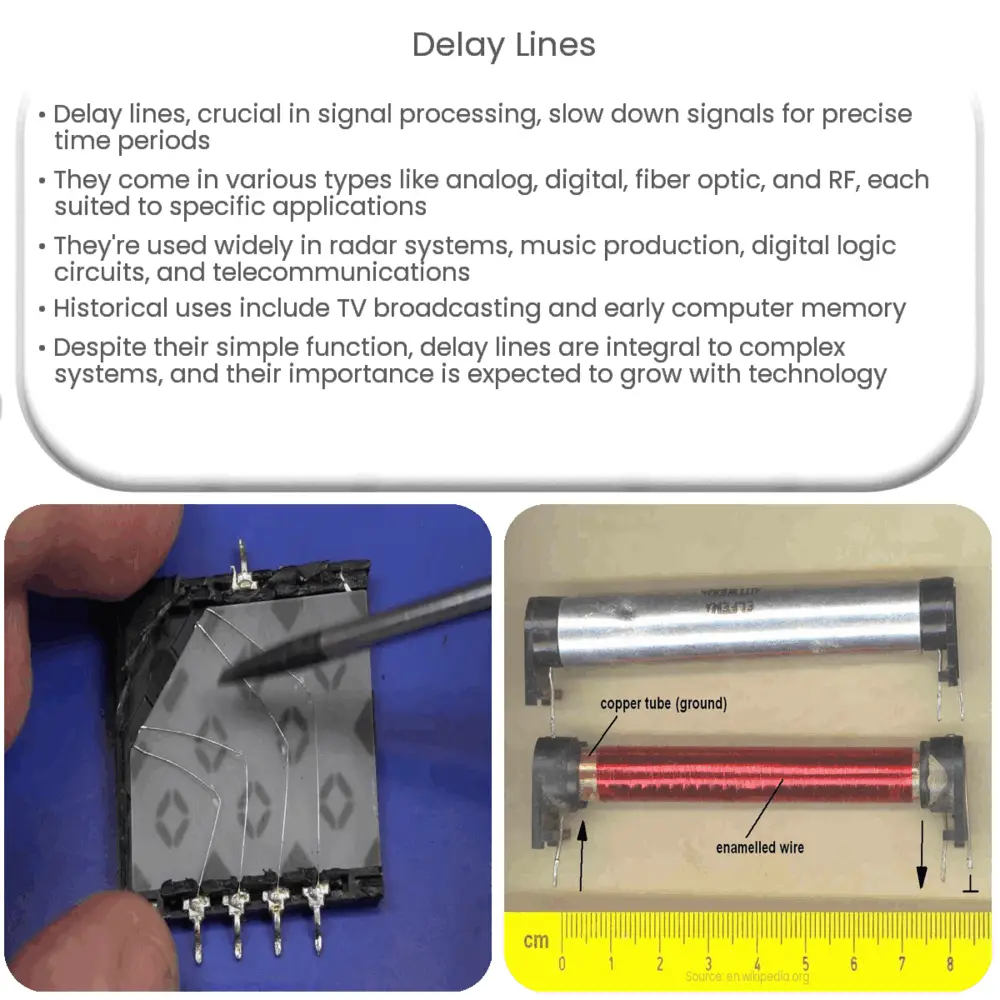Explore the world of delay lines, their types, and diverse applications in fields like broadcasting, music, and computing.

Understanding Delay Lines
Delay lines are an important concept in signal processing and electronics, with a myriad of applications ranging from telecommunication systems to musical effects. Essentially, they are devices or techniques that slow down, or ‘delay’, a signal for a specific period of time.
The concept of delaying signals has its roots in the early days of analog electronics, where physical properties of materials were exploited to slow down electrical signals. These early delay lines were often made of materials like quartz crystal or magnetic tape, which could hold onto an electrical signal for a fraction of a second before releasing it again.
Types of Delay Lines
Over time, delay lines have evolved and diversified to suit a wide range of applications. While the specific implementation may vary, the underlying concept remains the same. Here are some of the common types:
Applications of Delay Lines
Delay lines have a wide variety of applications, especially in areas where precise timing control of signals is required. For instance, they are crucial in phased array radar systems, where signals must be carefully timed to steer the radar beam. Similarly, in music production, delay effects can be used to create echo effects or add depth to a recording.
Delay lines also find usage in digital logic circuits, where they can be used to synchronize signals or create timing sequences. In addition, they are used in telecommunication systems for equalization, signal shaping, and more.
Detailed Applications of Delay Lines
Let’s delve deeper into how delay lines are used in some specific applications:
Conclusion
In conclusion, delay lines play a vital role in various fields, including telecommunications, broadcasting, computing, and music production. Despite their seemingly simple function of delaying signals, they serve as a fundamental building block in many complex systems, allowing precise control over the timing of signals. As technology continues to evolve, it is expected that the applications and importance of delay lines will only continue to grow.
Whether it’s enabling high-speed communications, adding depth to our favorite songs, or facilitating the operation of complex radar systems, the humble delay line proves that sometimes, a little delay is exactly what’s needed.

